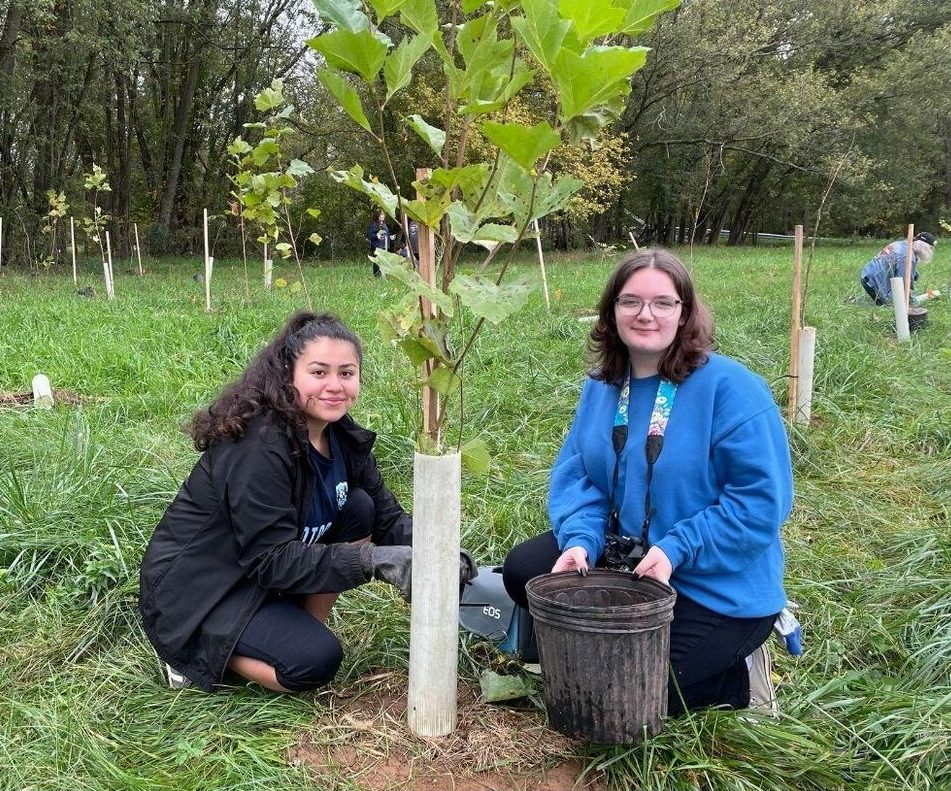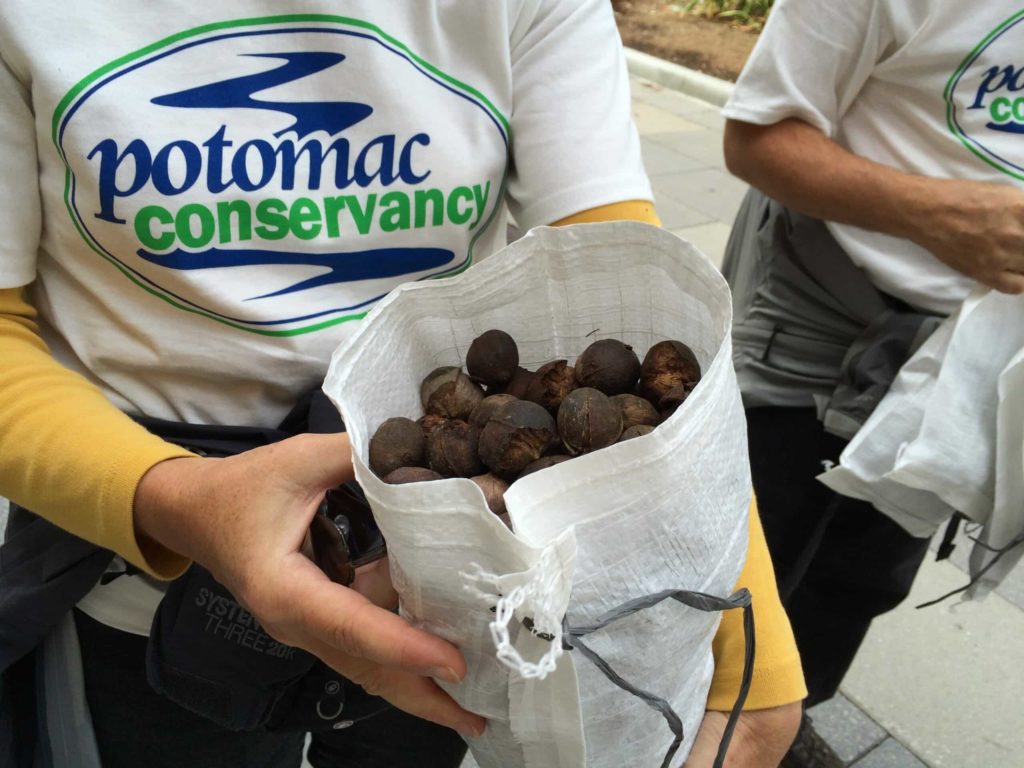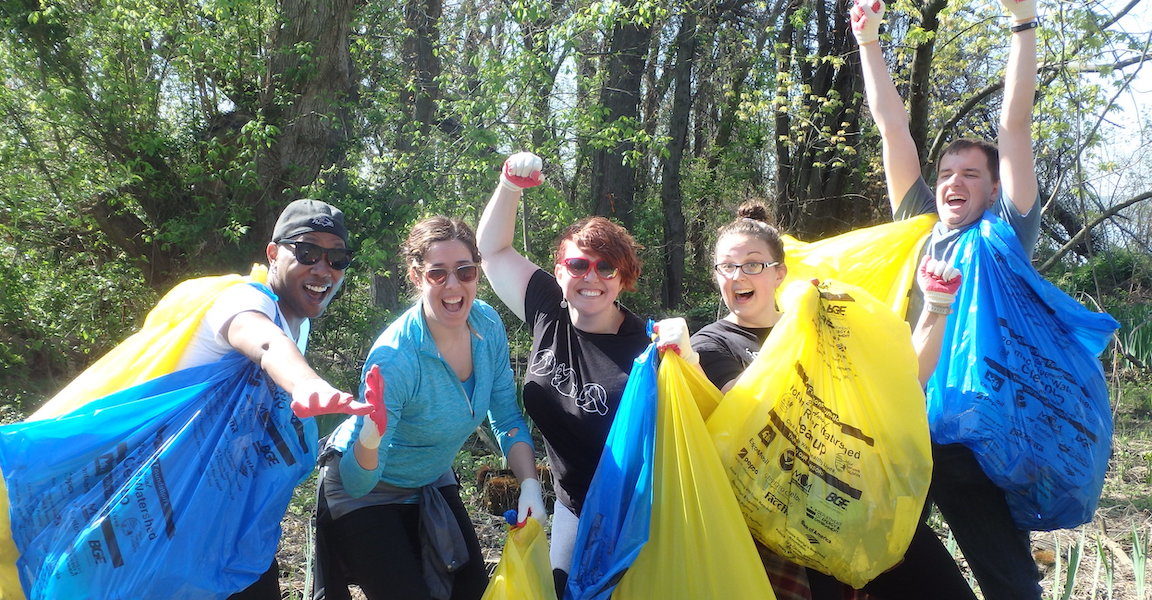Most of us have heard the expression, “Many hands make for light work.” Many hands are definitely at work at the Potomac Conservancy, whose goal is to make the Potomac River safe for swimming and fishing by 2025. That’s an ambitious goal, but the conservancy has 30,000 supporters who have joined the fight to clean up one of our nation’s wildest urban rivers.
“The Potomac is ours to enjoy, but also ours to protect,” observes Weyessa McAlister, director of community conservation for Potomac Conservancy. The Potomac River is one of the most ecologically diverse waterways in the country, and it supplies drinking water to five million residents in the Washington, DC metro area. “We invite community members to volunteer their time and get their hands dirty for clean water. It’s really exciting to see volunteers of all ages at our events throughout the year,” he says.

Collecting Native Seeds for Tomorrow’s Trees
Most people aren’t familiar with seed collection, but it is one of Potomac Conservancy’s critical volunteer activities. The program, Tomorrow’s Trees, is important to Potomac Conservancy’s reforesting efforts because the areas along the region’s streams and rivers require seedlings of trees native to that area. Through the program, volunteers collect acorns and other native tree seeds across Maryland and Virginia and provide them to state nurseries.

“Locally evolved trees are especially important because they are adapted to local soil, rainfall, and temperature conditions and have developed natural defenses to withstand many types of insects and diseases,” explains Alexis Dickerson, Potomac Conservancy’s senior director of community conservation. “Because of these traits, native plants will thrive with a minimal amount of maintenance.”
Such programs are critically important in the Chesapeake Bay region, where 70 acres of forest are lost every day. Dickerson notes that restoration goals set by the EPA’s Chesapeake Bay cleanup plan call for 900 miles of streamside forests (also called riparian buffers) to be planted each year until 70% of all streams in the Bay region are lined with trees. Potomac Conservancy is part of a region wide effort in which nearly 56,000 volunteers have collected more than 164,000 pounds of acorns, walnuts, and other hardwood tree and shrub seeds since the program’s inception in 2001.
Clean It Up!
Another popular volunteer activity is the Potomac River Cleanup. In partnership with the National Park Service, Montgomery Parks, National Parks Conservation Association, Latino Outdoors, Green Muslims, and other groups, Potomac Conservancy hosts cleanups along the river at sites like Theodore Roosevelt Island in Washington, DC and Jones Point Park in Alexandria, VA. “Last year alone, more than 630 volunteers helped to remove more than 10,000 pounds of trash from the river’s shores,” says McAlister.
(Want to help? Check out Potomac Conservancy’s river cleanup calendar.)
Since a river is only as healthy as the lands that surround it, Potomac Conservancy also works to protect and conserve lands in the Potomac Highlands and advocates for clean water policies at the state and local levels. Restoring the river to full health is not just an environmental issue—it’s a matter of public health.
It’s worth remembering that we need to not only preserve the natural environment of the Potomac River, but also ensure the health and wellbeing of the communities that depend on it. This is a huge task but one that can be accomplished with enough willing hands.
Ready to get involved? Visit potomac.org to take action. To learn more about Potomac Conservancy’s impact, read their 2021-2022 annual report here.
Sustainably,
Bobby Firestein
For our 2023 Ecoprint calendar, Protecting the Natural Beauty of the Chesapeake Bay, we have partnered with 13 different organizations, all dedicated to helping solve the environmental challenges in this important ecological hub. The Potomac Conservancy is our featured partner for the month of February. To get your own 2023 Ecoprint calendar, click the button below.

